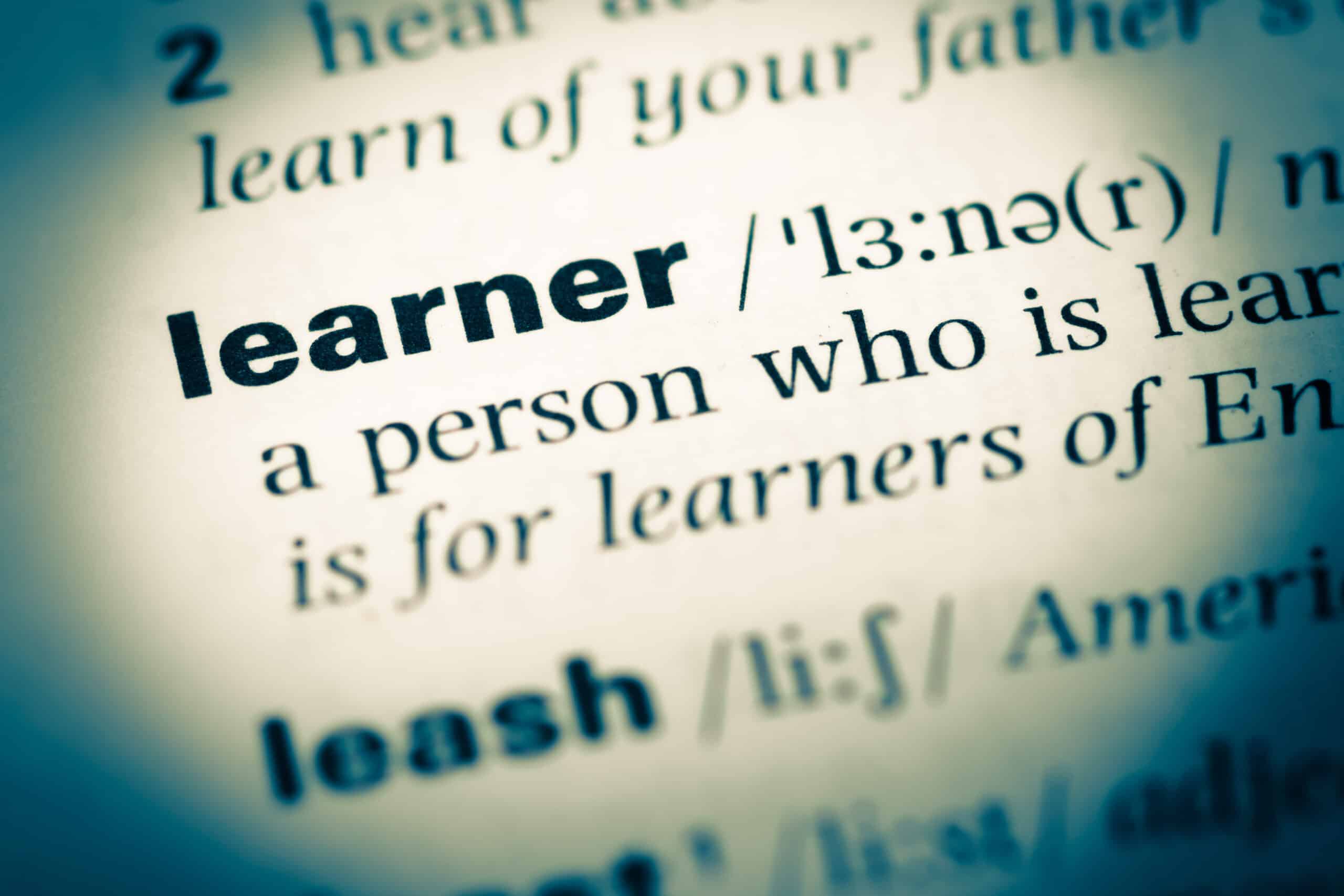Have you ever had problems learning at the same pace as your classmates? This might be due to the fact that each person has a different style of learning. And in classrooms, teachers instruct everyone through the same method. So, if you absorb knowledge better through movement, worksheets might not be the most useful learning tool for you.
What you need is to understand which type of learner you are. Once you know this, you can begin to do activities focused on that learning style. This will help you learn more efficiently. And you can apply this to any subject, from math to languages.
Types of Learners
It can be a little confusing to truly understand what type of learner you are. How do you know that? Well, first you can observe yourself. When you’re studying alone for an exam, how do you take in everything you need to know? Do you learn better by listening or by doing an activity that helps you understand the lesson?
You can also think of your classes. Which types of classes do you excel at? The ones that are all about writing or the ones that have PowerPoint presentations? Knowing yourself is the first step to knowing how you can learn effectively.
But the best way to know what kind of learner you are is to check the characteristics of each. This will help you realize new ways of studying.
Different investigations have come up with the different types of learners that exist. You might notice that some people say that there are 4, others say that there are 7, 8 and even 10 different learning styles.
While there’s not one number of types of learners that all people agree on, the VARK Model is probably the most famous research. And it claims that there are four types of learners: visual, auditory, read/write, and kinesthetic.
Each name indicates what they’re about. Visual learners prefer to watch images, videos, drawings, or any other visual tool. The aural, also known as auditory learners, absorb everything by listening to the information. The reading/writing learners prefer to read and write. And the kinesthetic, also known as tactile learners, prefer to do activities that help them learn.
Language Learning Tips for the Different Learning Styles
You can definitely apply the different learning styles to languages. So here are some tips on how to study languages depending on which type of learner you are. They’ll help you whether you are learning a new language from scratch or just want to improve your language skills.
Visual Learners
Create vocabulary flashcards.
You can draw or print and paste images of the vocabulary you’re currently learning on different flashcards. Make sure to write the name of the object on each flashcard as well, and then study them. It’ll be easier for you to learn the words by seeing the image.
You’ll understand what the word is, how it looks and what it does just by looking at it. Then, you can play a game. A friend of yours can show you the card while covering the word, and you have to guess the name of the object you’re seeing.
Draw mind maps.
You can use different colors, different geometric figures, and even different typography to create a fun and original mind map. It can be about any language topic you’re currently learning, especially grammar, since mind maps will help you summarize the most important information of a big and sometimes complicated subject.
So, for example, you can do a mind map about each verb tense in your target language. Mind maps will also help you organize your knowledge.
Use objects from your surroundings to acquire vocabulary.
So if in your language classes you’re seeing vocabulary of clothing, you can help yourself remember with your own wardrobe. You can try to mention the name of a particular piece of cloth in your target language. Maybe even do it with your friend’s outfit.
For example: if you’re learning Spanish and she’s wearing heels, you can tell her “Lindos tacones” (nice heels). It’s kind of like the flashcards, but you will be seeing the objects in real life, not just in pictures.
Play word search puzzles.
Word search puzzles are a great way for visual learners to learn vocabulary. Of course, the words in the game have to be in your target language. You might look for words you’ve never heard of, so you’ll gain new vocabulary. This game is also a great way to learn how to spell words since you’re going to see them written in the game.
Watch videos.
This one might seem obvious, but videos are a great way for visual learners to learn. You can look up videos from the language topics that are the most complicated for you.
Read books in your target language.
Books let your imagination run wild. When reading a story, you will picture the characters and situations in your mind. You will also learn spelling because you’ll see how the words are written. There are different books depending on your language level.
Aural learners
Listen to podcasts in your target language.
There are many different podcasts that talk about specific languages. If you’re a beginner, you can start with podcasts that explain different topics about your target language but in your native language. So you understand everything. As you advance, you can listen to language learning podcasts in your target language.
If you are more advanced, you can also listen to podcasts that talk about different topics in your target language. So, for example, if you are interested in history or movies, you can look up international podcasts about those subjects. This way you’ll gain vocabulary for other situations.
Record your lessons and listen to them later.
If your language teacher lets you, you can record the audio of your class. And after school, you can listen to it with a noiseless background, so you don’t get distracted. You’ll strengthen what you learned in class. And if the teacher spoke in your target language, you’ll even get to listen in detail to his/her pronunciation.
Sometimes, during classes, teachers ask us to write what they’re saying. But auditory learners prefer to just listen. With this method you’ll get to listen carefully to what was taught in class, and learn your way.
Listen to audio books or read out loud.
Audio books will help you improve your pronunciation. It’s even better if they’re language learning audio books, because you will truly understand the information that is being taught. You can also read the books or even your notes out loud to help you comprehend everything more easily.
Speak with your language classmates.
You all can do meetings every week or so, and discuss one topic that you’re currently learning in class. They can explain to you the things that you’re struggling with. And you can also explain to them the topics they’re having trouble with.
Make sure that you enroll in language classes that focus on speaking, like TruFluency lessons.
This way you’ll get to listen to your tutors and also speak with them. Maybe you’ll even repeat the information that they just taught you. Listening and speaking is a great method of learning for auditory listeners.
Reading/Writing learners
Read articles about how to pronounce words in your target language.
You might think that learning pronunciation as a reading/writing learner is impossible. But that’s not true. Though we do encourage you to listen to foreign words being spoken out loud to improve pronunciation, there are other methods that will help you too. You can read blog posts about how to pronounce vocabulary from another language.
In them, you might find information about the different sounds between your native and your target languages. And you’ll understand why it’s so difficult to say some words out loud. In these types of blogs, you will also read some tips on how to move your mouth to pronounce correctly.
Write the definitions of words that you don’t know.
You can even make your own dictionary in a notebook, and fill it with new words and their definitions as you find them. This will help you memorize and acquire new vocabulary. You can also create vocabulary lists; they will be your best friends.
And you can even write the lists according to themes. For example: vocabulary for food, for parts of the body, for numbers, and more. You can write down the word in both your native and target language.
Try to write a story in your target language.
If you’re a beginner, it can be a short story. As you move on in your language journey and become more advanced, you can create longer stories. If you are learning specific vocabulary in your language classes, you can practice it by challenging yourself to add those words into your story.
Same if you’re currently learning a verb tense. You can write a story in past, present continuous, or any other tense you’re learning.
Answer proofreading tests and quizzes.
Exercises about finding mistakes in sentences or paragraphs, and correcting them, are a great way for reading/writing learners to practice their language skills. Sometimes teachers provide these exercises in classes, but you can also practice them after school. Just look up some of these exercises or tests on the internet.
Kinesthetic learners
Role-play!
You can create a role-play evening with your language classes’ classmates and friends. Pretend you’re in a certain situation that has to do with real life, and then talk in your target language.
It’s more interesting if you create a problem, so you all can solve it while speaking another language. This will make you improve your everyday vocabulary and conversation skills, as well as your listening and pronunciation.
Watch YouTube videos.
You can watch language learning videos, but make sure that they show examples of the topic they’re teaching. It will help you understand how that particular language topic is used in real life.
Other videos you can watch are the vlogs where people show you how they live. This way you’ll gain everyday vocabulary, improve listening and pronunciation, and see the life of a native speaker of your target language. After all, kinesthetic learners understand better through real-life examples.
When it’s time to learn vocabulary, you can do activities related to the words and phrases that you’re currently learning.
For example: if in your classes you’re learning vocabulary of sports, you can try some of those sports. You can organize a football match in your target language with your friends. So, instead of saying “ball” or “players” in your native language, say it in your target language.
Or if you’re learning vocabulary for food, you can cook some recipes and mention the ingredients in the language you’re acquiring.
Talk with native speakers.
If you’re traveling to a country of your target language, don’t be afraid and try to speak with the locals. But if you can’t travel, you can also do it at home. Use language exchange websites, where you’ll speak with native people from any language you want.
It might be scary at first, but you’ll definitely improve. And you’ll enjoy speaking to a native because they’ll teach you useful vocabulary.
The Best Way to Become Fluent in a Language
Even if you’ve already identified what type of learner you are, remember that you can have skills of different learners. You might be visual, but role-playing also works well for you. So you might have a little bit of the kinesthetic learner type.
So don’t put aside activities from other learning styles; they can complement each other. Just look for what works best for you. It might be a trial-and-error path, but you’ll get to know the best studying techniques for you.
We also believe that the best way to language fluency is by speaking. This might be easier for aural and kinesthetic learners, but it’s necessary for all. At the end of the day, no matter how many grammar rules you know, you need to speak the language.
But if you’re not sure on how to achieve that, we’ve got you covered. Just take TruFluency’s customized language classes. That’s right! Our lessons are personalized to your challenges and language goals.
We have native tutors that truly care about you, and will teach you useful vocabulary and idioms, as well as pronunciation. Our lessons are based on the Bellieu Method, created to become fluent in languages. So you’ll speak in every class with the security that we won’t judge you for making mistakes.
All you have to do is choose your language and a teacher. Get started now or try our trial classes – 2 hours for only $49!





